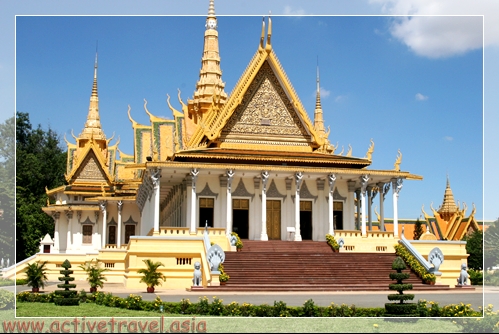Mention you’re going to Cambodia and chances are you’ll end up comparing notes on the glorious temples of Angkor, among the most awe-inspiring – indeed, mind-blowing – monuments ever conceived by the human mind.

It is hardly surprising that so many travelers from around the globe dream of gazing upon the towers of Angkor Wat, walking through the root-strangled gateways of Angkor Thom, and staring back at the enigmatic smiling faces that have made the Bayon famous.
But Cambodia has a great deal more to offer than its headline sights. Travelers at first drawn by the spectacular temples around Siem Reap often end up enchanted – and determined to return – thanks to the friendliness of the Khmer people, the sublime beauty of the countryside and the botanical exuberance of the country’s still-pristine tropical rainforests.
Parts of Cambodia’s south coast are fairly well-known to travelers. Beaches, nightlife, restaurants and a backpacker vibe make Sihanoukville, Cambodia’s main port, the country’s third-most-popular tourist destination. Kampot, with its run-down French-era buildings and mellow spirit, is popular as a starting point for Bokor National Park and its grand, colonial-era Casino, now an eerie ruin.
But head northwest towards the Thai frontier and you come to Koh Kong Province, an area of breathtaking beauty and incredible biodiversity that was almost inaccessible until the completion of Highway 48 just three years ago. As a result, the one-time smugglers’ port of Krong Koh Kong is transforming itself into a centre of ecotourism.
The deserted beaches of Koh Kong Island are a major draw, as are the mangrove forests lining the coastline and the ecolodges sprouting along the Tatai River. More adventurous travelers can head upriver to the remote hamlet of Chi Phat, home to a pioneering ecotourism initiative, and the truly intrepid can hire a guide to trek deep into the Cardamom Mountains, one of Southeast Asia’s last great wildernesses.
You can also experience untamed wilderness in Cambodia’s far northeast corner, in the highlands bordering Laos and Vietnam. In far-off Ratanakiri Province, the red-earth town of Ban Lung is an excellent place to organize a trek to nearby ‘hill tribe’ villages or to Virachey National Park, home to endangered elephants, gibbons and hornbills. Before you set out, make sure that your guide is both culturally sensitive and ecologically aware (it’s a new industry so, unfortunately, not all are).
Until just a few years ago, the grasslands and forests north of Angkor, up towards Thailand and Laos, were hard to get to in the dry season and virtually inaccessible in the wet. But thanks to a network of new roads – paved in part because of the ongoing military confrontation with Thailand – the superb temples of Banteay Chhmar, the former Khmer Rouge stronghold of Anlong Veng, the spectacular cliff-top temple of Prasat Preah Vihear and some remote wildlife sanctuaries can now be reached with relative ease and in reasonable comfort. Before heading to potential hotspots such as Prasat Preah Vihear, however, check with local news sources to make sure the frontier is quiet.
Whether you’re a first-time visitor to Cambodia or heading back for another encounter with Khmer culture, it’s off the beaten tourist track that you’re likely to find some of the kingdom’s best-kept and most enchanting secrets. Not only are you assured of a warm welcome and the kind of adventures that make travel so magical, but by spending time in out-of-the-way villages and remote wilderness parks, you’ll be helping to bring tourist dollars to parts of the country rarely touched by traditional tourism.
Source: Lonelyplanet
Comments